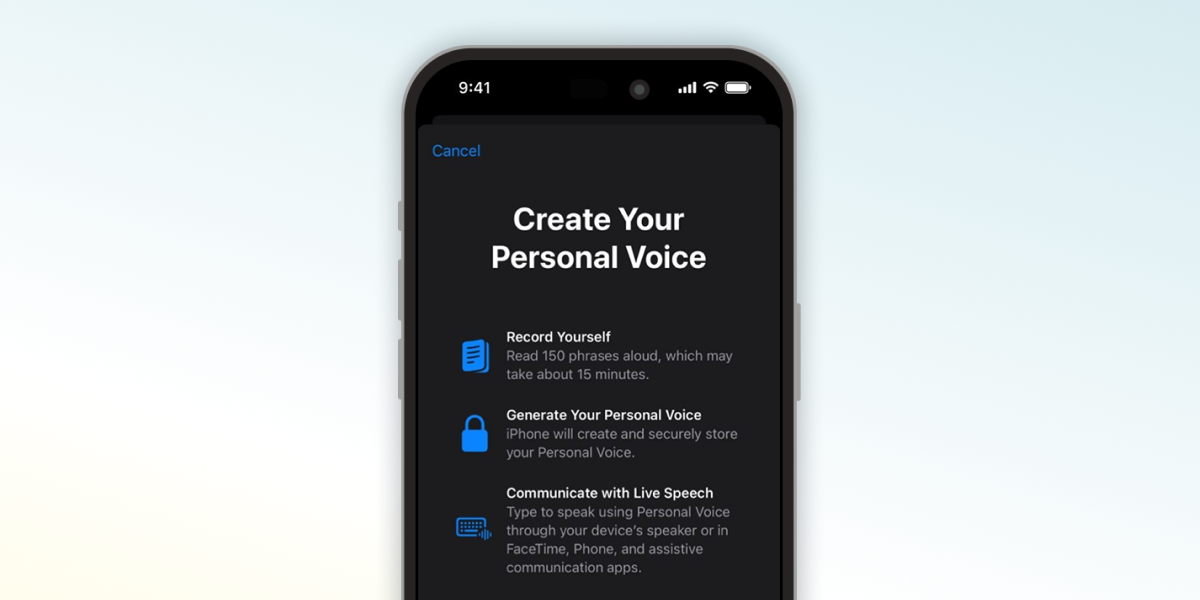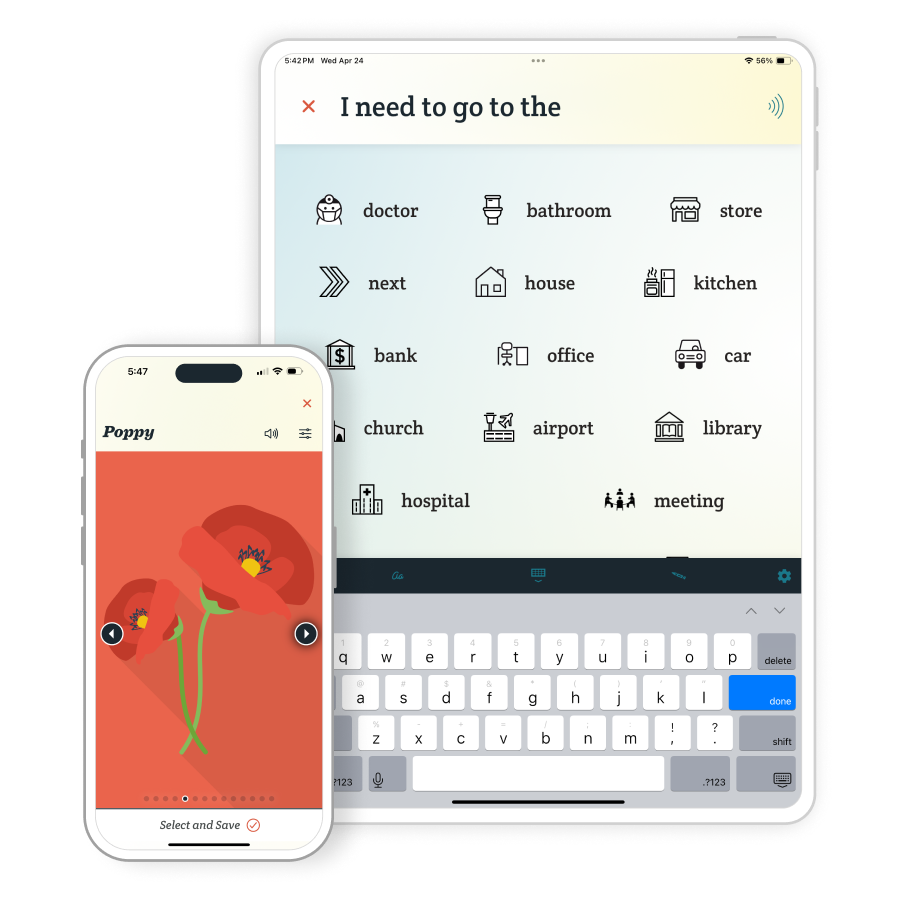Which AAC Apps Support Apple Personal Voice?

Personal Voice is a feature available on Apple devices running iOS 17 and up that lets you create a digital replica of your own voice. When it first launched, Apple noted that Personal Voice could be used in augmentative and alternative communication (AAC) apps. However, implementation was left for the developers of these apps to figure out, so integration is not guaranteed.
Personal Voice recently saw an upgrade in iOS 26, making it a more desirable feature in AAC apps than ever. A Personal Voice now takes much less time to train and generate. Before, it was a lengthy process that was difficult for many AAC users. You needed to read 150 phrases before Apple had enough data to produce your clone, but now it only takes 10!
At this point, most popular AAC apps on iOS/iPadOS support Personal Voice. Some of the most notable AAC apps with Personal Voice compatibility are Spoken, TD Snap, Proloquo, and LAMP.
Spoken - Tap to Talk AAC

Spoken features built-in support for Personal Voice. The addition was made in an update that also integrated ElevenLabs features. If you have a Personal Voice, you'll be prompted to allow Spoken access when you first open the app.
During onboarding, you'll only see the voices that Spoken has curated. Pick one of these as a temporary voice to enter the app. Once you make it in, you can switch to your Personal Voice.
Spoken's documentation for switching to your Apple Personal Voice can be found here.
AssistiveWare

Find AssistiveWare on the App Store
From what we can tell, AssistiveWare was one of the earliest adopters of Personal Voice in the AAC space. Most of their apps support it, including Proloquo, Proloquo2Go, Proloquo4Text, and simPODD.
Switching to your Personal Voice varies across the AssistiveWare apps, so we've added the support articles for each:
- Tutorial for using Personal Voice in Proloquo
- Tutorial for using Personal Voice in Proloquo2Go
- Tutorial for using Personal Voice in Proloquo4Text
- Tutorial for using Personal Voice in simPODD
PRC-Saltillo
Find PRC-Saltillo (Prentke Romich Company) on the App Store
PRC-Saltillo's apps include heavy hitters like LAMP - Words For Life, TouchChat, and Dialogue AAC. LAMP and TouchChat are both very popular among AAC users, so it's good to see them offering Personal Voice.
Switching to your Personal Voice follows the same flow in all three apps, but for thoroughness, here are the manuals for each of them:
TD Snap
TD Snap, by Tobii Dynavox, Is another widely used AAC app, especially in schools and therapy programs. It's built around Tobii Dynavox's long-running communication system, which makes it familiar to many professionals and users who've worked with their devices before.
When you first open TD Snap after setting up a Personal Voice, your device should ask if you want to give TD Snap permission to use it. If you refuse, you'll need to change that in your device's settings later.
Tobii's tutorial for using Personal Voice is technically written for their TD Pilot and SC Mini speech devices, but both utilize iPadOS, meaning the process is the same as on a standard iPad. You can find the support article here.
Questionable Support for Dedicated Devices
It should be noted that Apple stated Personal Voice wouldn't be available on devices that can be remotely managed by administrators (like TD Pilot or SC Mini) for security reasons, yet Tobii Dynavox has confirmed that it currently works. Whether or not Personal Voice will continue to be accessible on these devices is unclear, so anyone using it on them should be cautious of future updates stripping compatibility.
What if the AAC app I use isn't listed?
Personal Voice is not limited to the AAC apps above. You can find it in most big-name AAC apps. We also found a few smaller apps that support it, like SimpleSpeak AAC and TypingTalk AAC. This goes to show that integration is becoming widespread.
Remember, support for Apple Personal Voice isn't automatic and is still rolling out across AAC apps. If you don't see it in the app you use, that doesn't mean it isn't planned for a future update. If you want to see support for it, consider reaching out to the developers. User requests can help prioritize integration.
I can't find my Personal Voice in any AAC apps
If you can't find your Personal Voice in any of the AAC apps mentioned above, it's probably because you need to toggle on “Allow Apps to Request to Use” on the Personal Voice page in your device's settings. Without this enabled, apps won't even be able to ask for permission to use your Personal Voice. Once you flip this switch, the above apps should start asking if you'll allow them to use your Personal Voice.
If you don't have a Personal Voice yet, you need to make one before you'll see the option appear in any apps.
Obviously, Personal Voice is not available on Android devices or any other operating systems besides iOS, iPadOS, and MacOS. Whether or not an equivalent feature will become available on Android is yet to be seen.
How do I make a Personal Voice?
You can find our step-by-step tutorial for setting up a Personal Voice here. The short version is that you need to find the Personal Voice option in your device's Settings and then follow the on-screen instructions.
If you can't find the option to create a Personal Voice, you're probably using an incompatible device and/or operating system. Apple lists technical requirements here. Alternatively, Personal Voice may be missing from your device because you don't have a lockscreen set up. For security reasons, users without a passcode, touch ID, or face ID cannot create a Personal Voice.
Now is an especially good time to create a Personal Voice: with the recent iOS 26 update, Apple has significantly improved them, making it faster and easier than ever to set one up. It used to require around fifteen minutes of audio, but now only requires one. This makes it a lot more accessible for AAC users who struggle to get words out.